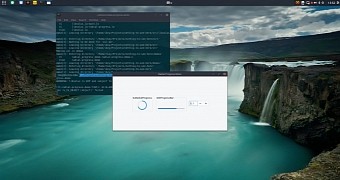If you have a computer with an AMD hybrid configuration with Intel HD integrated graphics, and you're running the newest GNU/Linux distributions, chances are the AMD Radeon GPU is not properly supported.
It just happens that we have an Acer laptop that features such hybrid configuration, and we're using the latest Ubuntu 16.10 (Yakkety Yak) operating system on it, which should be officially launched on October 13, 2016. We did an upgrade from Ubuntu 16.04 LTS (Xenial Xerus), but things have not improved at all.
The problem is with AMD, which no longer offers a graphics driver for its older Radeon GPUs, such as the AMD Radeon HD 8750M (with 2 GB RAM) we're running on said laptop. It's a four-year-old GPU, but according to this notebookcheck.net benchmark, it's decent to run some nice games from two-three years ago, better than the integrated Intel GPU.
So not only that you won't have control over the discrete AMD graphics card, you'll have to open a terminal emulator and run the "DRI_PRIME=1 program" command (where 'program' is the executable of a certain application, e.g. DRI_PRIME=1 Steam) to use an app with it.
All good, running the respective command is not so much of a hustle these days, especially that you can add some workarounds to make those apps to always run with the dedicated GPU, but the real problem here is that the open-source amdgpu and radeon drivers integrated into the kernel offer a poor experience.
Here's how the Solus developers are helping fix the problem
We all know by now that the Solus development team have been doing a great job lately with their rolling operating system, bringing you all the latest software versions and GNU/Linux technologies as soon as they're out, but they are also working to make the Open Source and Linux community a better place.
They've provided us with the excellent Linux Steam Integration project that aims to better integrate the Steam client into various GNU/Linux operating systems, and they are now promising to bring full support for Optimus configurations (systems with Nvidia hybrid discrete graphics) to Solus users.
And they won't stop there, as Solus Project leader Ikey Doherty tells us in a recent conversation that the team is working hard on a new project, called linux-driver-management, which promises to offer cross-distribution graphics support for multiple vendors and hybrid configurations, including AMD, and finally plug this gap in the Linux world.
"The initial version of the tooling will focus on enabling a mutually exclusive configuration change, i.e. switching between the on-board and dedicated for all graphical operations for the duration of the uptime," says Ikey Doherty exclusively for Softpedia. "Once that groundwork has been laid, we'll incorporate dynamic switching between the onboard and dedicated GPU, with a view to per-app configuration being eventually supported."
The linux-driver-management project, when it's ready to take over our Linux desktops, will replace the in-house built DoFlicky and gl-driver-switch tools for the Solus operating system. It will also be accompanied by a standardized library providing core discover-ability and configuration for hybrid graphics configurations. More details can be found at https://github.com/solus-project/linux-driver-management#rationale.
Sneak preview of what we'll be working on after Solus 1.2.1 and Optimus support are finalised - the start of rich UIs for Solus. pic.twitter.com/jC6L5RkGnN — Solus (@SolusProject) October 5, 2016

 14 DAY TRIAL //
14 DAY TRIAL //